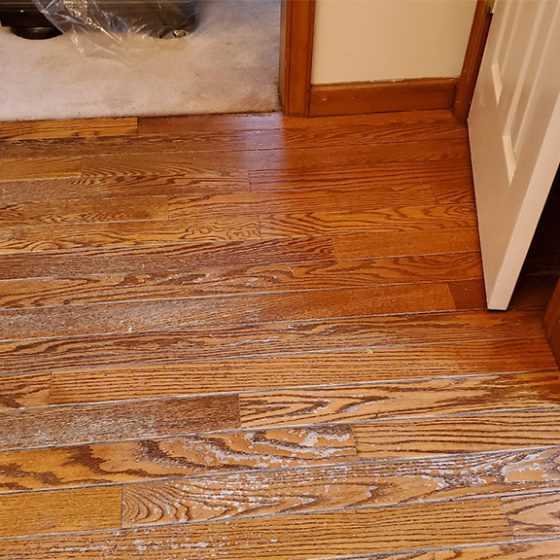Cardiff’s bulky waste collection service offers a convenient way for residents to dispose of large household items that don’t fit in standard bins. However, not everything qualifies for collection. Knowing what items are accepted can help you make the most of this valuable service while staying within council guidelines. This article outlines the items you can and cannot dispose of through bulky waste collection cardiff.
What is Bulky Waste?
Bulky waste refers to large items that are too big to fit in normal refuse or recycling bins. This could include household furniture, appliances, or garden waste. Bulky items often require special handling and disposal, which is where the Cardiff Council’s bulky waste collection service comes in handy.
Items You Can Dispose of Through Cardiff’s Bulky Waste Collection
Here’s a breakdown of the common items accepted by Cardiff Council’s bulky waste collection service:
1. Household Furniture
Many large furniture items are accepted, including:
- Sofas and Armchairs: Whether it’s an old sofa or armchair that no longer fits your style, these are generally accepted.
- Tables and Chairs: Dining room tables, chairs, and coffee tables can all be collected.
- Wardrobes and Cabinets: Large storage furniture, including wardrobes, cabinets, and dressers, can also be disposed of.
- Mattresses and Bed Frames: If you’re replacing your bed or mattress, you can have your old one collected.
2. Large Household Appliances
Bulky waste collection accepts a range of large appliances, such as:
- Refrigerators and Freezers: These must be empty, and Cardiff Council ensures they are disposed of in an environmentally responsible manner due to refrigerant gases.
- Washing Machines and Dishwashers: Old, broken-down washing machines and dishwashers can be scheduled for collection.
- Ovens and Microwaves: Large cooking appliances, such as ovens and microwaves, can also be collected.
3. Electronics
Some electronic items may be accepted, including:
- Small to Medium-Sized Electronics: Smaller household electronics, like microwaves or stereos, are often collected.
Check with the council about large electronics, as rules may vary.
4. Garden Waste
Large garden waste items that can’t fit in regular garden bins are also accepted. Examples include:
- Tree Branches and Shrubs: Large branches, bushes, and shrubs can be collected as long as they are bundled neatly for easy pickup.
- Old Garden Furniture: Tables, chairs, and other outdoor furniture are also accepted.
5. Other Bulky Items
- Carpets and Rugs: You can dispose of old, rolled-up carpets or large area rugs.
- Doors and Wooden Panels: Old interior or exterior doors and wooden panels can be collected.
Items You Cannot Dispose of Through Bulky Waste Collection
While the service accepts many large items, there are restrictions on certain materials. Here are some items that are not accepted:
1. Hazardous Materials
- Chemicals: Paints, pesticides, and solvents are considered hazardous waste and are not accepted.
- Asbestos: Items containing asbestos must be disposed of separately through specialist services.
- Batteries and Fluorescent Tubes: These require special handling and should be taken to a designated recycling point.
2. Construction and Demolition Waste
- Bricks, Rubble, and Tiles: Materials from renovations or building projects are not eligible for collection.
- Plasterboard and Concrete: These items need to be disposed of through construction waste services or taken to specific recycling centers.
3. Automotive Parts
- Tyres and Car Batteries: These items are not allowed in bulky waste collection and must be disposed of through specialized recycling services.
4. Large Electronics
- Televisions and Computer Monitors: Some large electronic items, like TVs and computer monitors, may not be accepted through the bulky waste collection service. It’s best to consult the council’s website or contact them directly for advice on disposing of these items.

5. General Household Waste
Standard household waste or items that can be disposed of in regular rubbish or recycling bins are not accepted. This includes:
- Clothes and Shoes: These can be donated to charity or recycled.
- Small Household Items: Items like books, small kitchen appliances, or decorations should be discarded using regular waste services or donation.
Preparing Items for Collection
To ensure smooth and safe collection, follow these preparation tips:
- Disassemble Large Items: Break down large furniture like bed frames or tables, if possible, to make it easier for the collection team.
- Remove Any Hazardous Materials: Ensure that items are free of any hazardous substances, such as removing food from fridges or washing machines.
- Keep Pathways Clear: Place items in a clear, accessible location outside your property, but ensure they do not block walkways or create safety hazards.
How to Book a Bulky Waste Collection
Booking a collection is simple:
- Visit the Cardiff Council website or call their customer service line.
- Complete the booking form with details about the items you need collected.
- Choose a collection date that suits your schedule.
- Prepare the items and place them outside your property the day before collection.
The council may offer free collections for a set number of items, but additional items or special waste types may incur a fee. Be sure to check the pricing details on the website when booking.
Conclusion
Cardiff’s bulky waste collection service is a practical way for residents to dispose of large items that don’t belong in regular bins. By knowing what you can and cannot dispose of and preparing your items properly, you can make the most of this valuable service.


